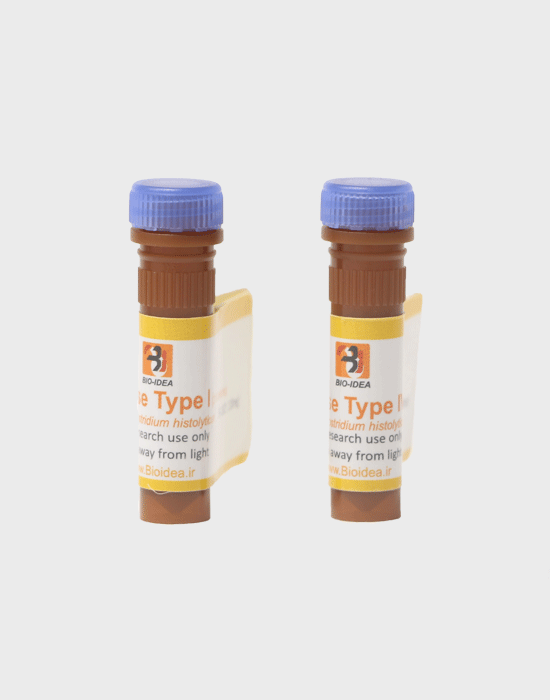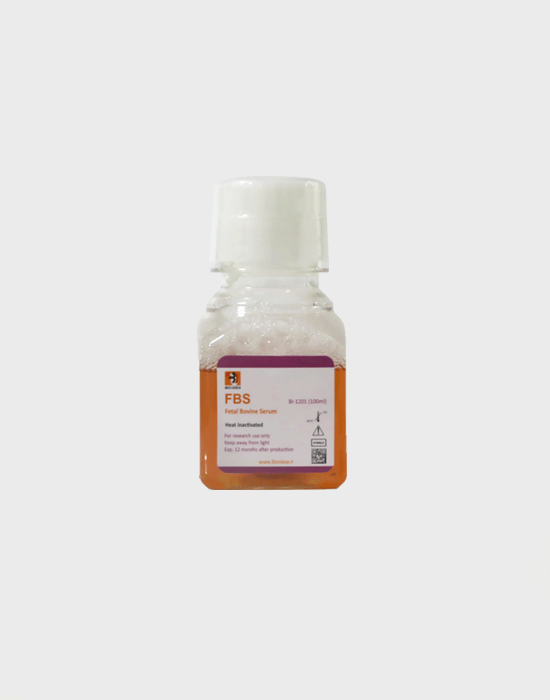Collagenase type I
Additional information
| Size | 100mg |
|---|---|
| Storage | 2 to 8 C |
| Shelf Life | Lyophilized |
| Product Categories | Enzymes |
Additional information
| Size | 100mg |
|---|---|
| Storage | 2 to 8 C |
| Shelf Life | Lyophilized |
| Product Categories | Enzymes |
Collagenase type I
معرفی محصول
کلاژنازها آنزیم های اندوپپتیدازی هستند که کلاژن را در ناحیه مارپیچ سه گانه تجزیه می کنند. کلاژن جزء فیبروز اصلی بافت همبند خارج سلولی حیوانات است. کلاژناز علاوه بر تولید توسط بعضی از باکتری ها، می تواند توسط بدن به عنوان بخشی از پاسخ ایمنی طبیعی نیز ساخته شود. کلاژناز معمولا بافت همبند را در سلول های عضلانی و دیگر اندام های بدن را هدف می گیرد. کلاژناز نوع I که توسط کلستریدیوم هسیتولیتیکوم ساخته می شود که دارای فعالیت ترپتیک بوده و برای جداسازی بافت بکار میرود…
برای قیمت تماس بگیرید
Description
Product Description
Collagenase (from Clostridium histolyticum) is a protease with a specificity for the bond between a neutral amino acid (X) and glycine in the sequence pro-X-glyc-pro.This sequence is frequentiy repeated in collagen and is unique among proteases in its ability to degrade the triple helical native it can destroy natural collagen fibrils commonly found in connective tissue.the crude collagenase usually contains Clostridiopeptidase A and a number of other proteases along with polysaccharidases and lipases and is commonly used for tissue dissociation.This crude enzyme is ideally suited for tissue dissociation since in addition to the enzyme required to attack native collagen and reticular fibers,it contains enzymes which hydrolyze the other proteins, polysaccharides, and lipids present in the extracellular matrix of connective and epithelial tissues.
Potency
One unit of the enzyme liberates 1µM of L-leucine from collagen in 5 hours at 37 ° C ,pH 7.5. The products activity is guaranteed to be greater than 125 units/mg.
Notes
• Store at 2-8 °C (5-to-20 °C after reconstitution)
• Avoid moisture and exposure to light.
• Avoid inhalation and skin contact.
•For research use only and not intended for human or animal diagnostic or therapeutic uses.
•Compared to other collagenase preparations,collagenase I has average levels of collagenase, caseinase, clostripine, and tryptic activities and is well-suited for digestions of fat,liver, and epithelial tissues. •Metal Chelating agents such as cysteine, EDTA or active oxygen species may inhibit the activity.
How to Use
1. Preparing stock and working solution:
Dissolve the non-sterile,lyophilized enzyme in HBSS (with calcium and magnesium)Or PBS(with calcium and magnesium)Or DMEM / F12. filtrater Sterilize the solution with a cell culture approved filtration unit.Crude collagenase is most often used in concentrations from 0.1 to 0.5% (W / V) or 50 to 100 U/mL. Once reconstituted use immediately or store frozen.that in the refrigerator immediately prior to use. 2.Dissociation of tissue The tissue is minced with a sterile scalpel or scissors. Wash the tissue several time in HBSS. The tissue fragments are soaked at +37°C.Increased efficiency is obtained using a rocker platform and supplementing the digest with 3 mMCaCl2. 3.Organ perfusion The digest is perwarmed to +37°C and perfused at a rate preoptimized for the particular organ. Addition of 3mM cacl2 increases the efficiency of dissociation. Dispersed cells and tissue fragments are separated from larger pieces by passing the mixture through a sterile stainless steel or nylon mesh. Fresh collagenase solution can be added to the fragments if further disaggregation is required. wash several times to eliminate debris and enzyme solution.A density separation step (Nycodenz) will give a cleaner suspension. Resuspend the pellet in the culture medium and incubate under predetermined conditions.
Additional information
| Size | 100mg |
|---|---|
| Storage | 2 to 8 C |
| Shelf Life | Lyophilized |
| Product Categories | Enzymes |
Be the first to review “Collagenase type I” Cancel reply
Related Products
مشتریان ما
ارائه محصولات باکیفیت به مشتریان، افتخار ماست
0
+
دانشگاه ها و دانشکده ها
0
+
مراکز تحقیقاتی
0
+
آزمایشگاه ها
0
+
بیمارستان ها و مراکز درمانی






There are no reviews yet.